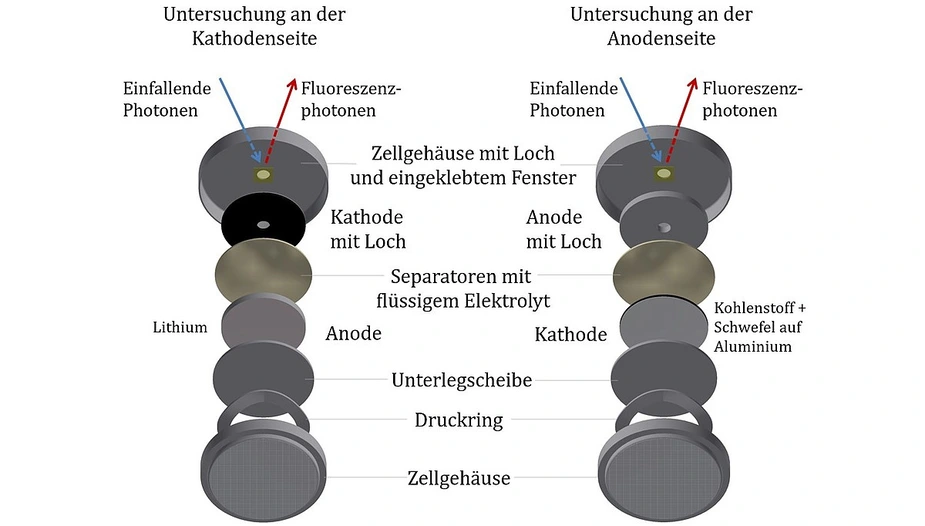Operando Analysis of Aging Mechanism in Lithium-Sulfur Batteries
PTB team investigates causes for the capacity decrease
High-energy density batteries play a crucial role for renewables, both as stationary storage system as well as for electric automotive applications. Every battery suffers under degradation effects leading to capacity and lifetime reduction. The understanding of the aging mechanism is mandatory for further cell improvement.
At PTB we developed an analysis to characterize during cell cycling the conversion and transport processes of polysulfides in lithium-sulfur batteries. With the combination of quantitative X-ray fluorescence analysis and near edge X-ray fine structure analysis (NEXAFS) at the synchrotron radiation facility BESSY II the absolute amount as well as the species of sulfur in dissolved polysulfides have been identified for three full charge-discharge cycles. By this, the percentage loss of the cathodic active material sulfur could be given for different charge states. Furthermore, it was possible to determine the change in the molecular length of the polysulfides, which significantly influences both solubility and reactivity. By investigating on both electrode sides, the “Shuttle-effect”, i.e. the movement of the polysulfides between the electrodes, and especially the accumulation at the anode could be observed for progressing cycle numbers. These time-resolved measurements during operation of the cell (operando) allow changes at the atomic level to be assigned to different states of charge.
With the investigation, we found out that not only the formation of polysulfides leads to capacity decrease but their accumulation at the negative electrode for further cycles. This leads to new cell design strategies, e.g. the use of separators which inhibit the movement of polysulfides.
Publication: Journal of Materials Chemistry A, D0TA12011A
Contact:
PTB Physikalisch-Technische Bundesanstalt
Department 7.2: X-ray Metrology with Synchrotron Radiation
Claudia Zech
Phone: +49 30 3481-7179
Email: Claudia.Zech(at)ptb.de
Press release PTB, 3 May 2021
